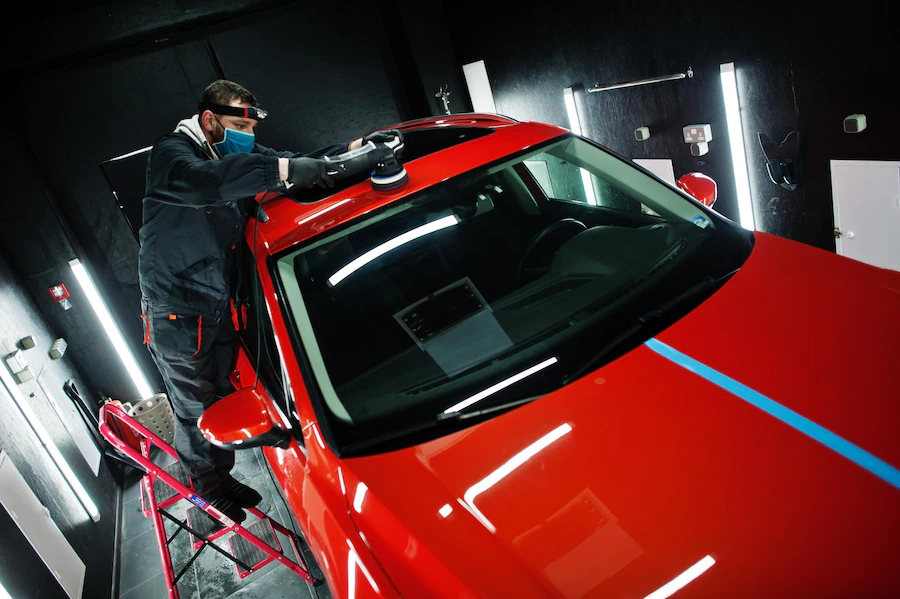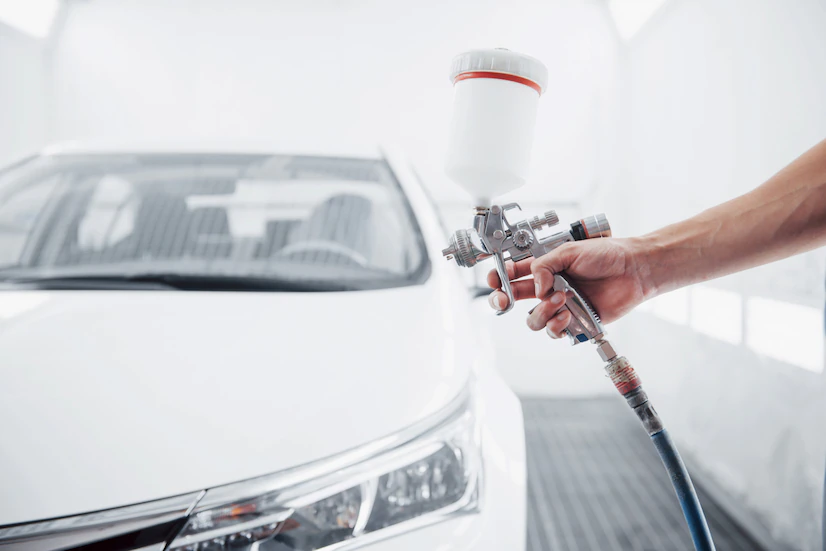What Do You Clean Surfaces With Before Applying Auto Body Paint?
There are a few different types of surface cleaners available that you’ll want to use before applying automotive paint. These include Waterborne solvent cleaners, tack cloths, Wax and grease removers, and adhesion promoters. These can be found at most paint stores but are not the same as kitchen paper towels.
Applying Auto Body Paint Tips –
Waterborne solvent cleaner
Before applying auto body paint, it is crucial to clean the surface thoroughly. This includes removing Wax, grease, and mould and release agents. The cleaning agent should also be capable of eliminating sanding dust. The cleaner should also comply with the strictest VOC regulations in the market, ranging from 0C to 200C.
Solvents clean surfaces by breaking soil into smaller particles. These particles are then sucked into the solvent and carried away from the surface. In addition, solvents tend to have lower surface tension than water-based cleaners, making them more effective in cleaning surfaces with tight clearances.
Waterborne solvent cleaners for this purpose include 3M Prep Solvent-70. This solvent removes dirt, oils, grease, and silicone from metal surfaces and is compatible with paint guns. A 3M Prep Solvent-70 bottle contains 65 g/L of Volatile Organic Compounds. Depending on your locality, you may be required to follow local regulations, so contact your distributor to obtain additional information.
In addition to a waterborne solvent cleaner, you should also consider specialty surfactants. Some of these cleaners are particularly effective at cleaning paint guns. They contain special agents that leave microfilm coatings on the surface. This is especially important when working with waterborne paint because it tends to stick more. You may need to adjust your schedule accordingly. For instance, you may need to reduce the curing time or increase the solvent in the cleaner.
In addition to solvent cleaners, water-based cleaners are equally effective. However, they usually require a rinse process. Many batch and in-line cleaning systems include a rinse and dry cycle. A water-based cleaner functions within a narrow range of evaporation. Moreover, it can be applied in a cold soak.
Tack cloths
Before applying auto body paint, it is essential to clean the surfaces properly. Dust and dirt can make the paint job look uneven and sloppy. Tack cloths can remove these contaminants and create a smooth surface for the paint. They are a very cheap preventative measure that will prevent substandard paint jobs.
A tack cloth is made of a material treated with turpentine or varnish. Some of these materials are solvent-based, while others are water-based. However, some of these chemicals are not suitable for all surfaces, and some react with some paints. To use tack cloths properly, they must be stored in a specific area.
Using a tack cloth before applying auto body paint is an essential step. This tool keeps the surface free of trash, loose sand, and other contaminants. Its microperforated surface makes it easy to clean a surface without scratching the paint.
Tack cloths are also great for removing sanding dust and other loose particles. While a standard rag won’t remove all dust, the tack cloth will pick up all the fine particles so they are not released into the air. This prevents the spread of contaminants and workers’ exposure to hazardous dust in the air.
Using a tack cloth before applying paint can prevent paint bumps. A tack cloth is made from cheesecloth, cotton gauze, beeswax, or a tacky petroleum substance. It can be purchased in large sheets or cut into manageable pieces. The tack cloth will trap dust particles and other particles, making it an effective way to prep a surface before applying auto body paint.
Wax and grease removers
Wax and grease removers are solvent-based products that clean surfaces before applying auto body paint. They remove surface contaminations such as Wax, grease, and oil. They can be applied by hand or with a spray applicator. After using the product on the surface, wipe it off with a clean, dry cloth.
A quality painting project starts with proper surface preparation. Using wax and grease removers is a critical step in the process. Dupli-Color offers a range of products for this purpose. The products remove dirt, road tar, grease, and oil.
Surfaces must be cleaned before applying auto paint to ensure the best paint adhesion. This will ensure the paint’s adhesion, preventing the surface from becoming scratched. Moreover, it helps to remove small particles of cloth fibre. Lint can ruin a paint finish.
Adhesion promoter
Using an adhesion promoter before applying auto-body paint is an excellent way to improve adhesion. The adhesion promoter is a one-component sealant that bonds to smooth surfaces. It dries quickly and offers superior holdout when filling scratches. The adhesion promoter is compatible with various coatings, including spray paint and basecoat.
If a part is already primed, an adhesion promoter is not needed, but it must be cleaned thoroughly. It must be triple-washed and scrubbed using hot, soapy water and isopropyl alcohol. Once the surface is clean, apply a thin layer of antistatic agent to prevent static charges from forming. After the adhesion promoter dries, the part can be painted typically.
When auto-body paint is used, the adhesion promoter is applied on the surface with a dry film thickness. Is applimilesive mils or less. Paint manufacturers recommend using the adhesion promoter on flexible surfaces such as bumper fascia. However, alternative application techniques are recommended if a surface is too hard to bond.
The plastic surface must be cleaned before applying auto-body paint. The adhesion promoter helps the paint adhere to the plastic. It contains chemicals that open the surface pores, allowing new coats to adhere better. The promoter should only be applied to clean, bare plastic surfaces because it will not be as effective on plastic parts treated with a sealant.
Plastic parts are more challenging to paint because they can develop a static charge. To overcome this problem, BASF recommends using separate products and processes for each type of plastic. These products and processes have different sanding and cleaning requirements than metal parts. The adhesion promoter is significant for flexible plastic surfaces, which can deform at low temperatures.
Generally, 3M Primer 94 is the preferred primer for plastic surfaces. If you need to use a more universal adhesive, you can use 3M Primer 111. This primer is suitable for both high-surface energy and low-surface energy plastics.



















